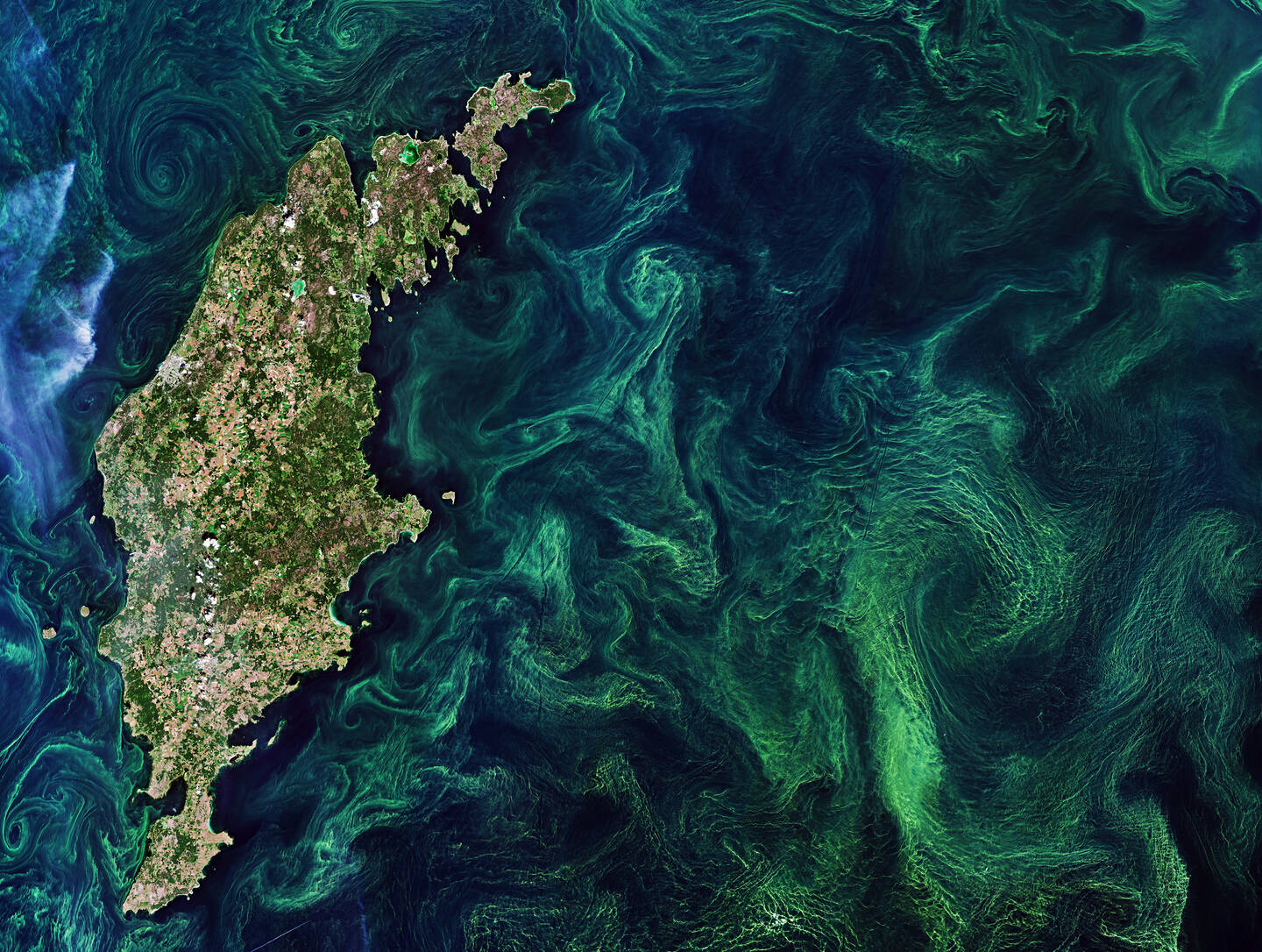
An algae bloom in the Baltic Sea. The term describes the rapid multiplying of phytoplankton, microscopic marine plants that drift on or near the surface. The chlorophyll that phytoplankton use for photosynthesis tints the surrounding ocean waters. The Baltic Sea faces many serious challenges, including toxic pollutants, deep-water oxygen deficiencies, and toxic blooms of cyanobacteria affecting the ecosystem, aquaculture, and tourism. Agricultural and industrial runoff pours fertilizers into the sea, providing additional nutrients for large algae blooms. The streaks, eddies, and whirls of late summer algae blooms, mixed by winds and currents, are clearly visible in the image. The Swedish island of Gotland can be seen on the left. July 20, 2019.
